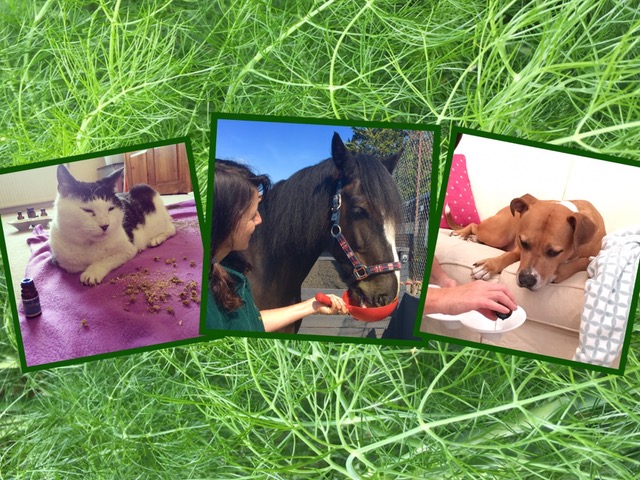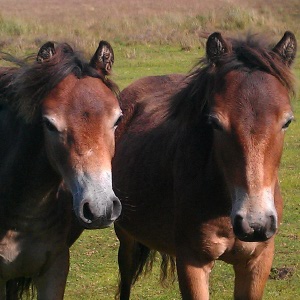How The Natural Benefits Of Zoopharmacognosy Can Help Your Animal
18/05/21 18:35
Learn How Zoopharmacognosy Can Help Your Animal
by Siobhan Pestano, Zoopharmacognosy Practitioner
What exactly is zoopharmacognosy and how can it help my horse, dog, or other animal?
This strange and unpronounceable-looking word refers to animals’ innate ability to self-select different botanical extracts to support their wellness.
As this scientific term was originally coined for animal behaviours observed in the wild, the behaviours would generally have been demonstrated with fresh plants. However, companion and domestic animals also clearly demonstrate their natural affinity with self-selection - whether in an outdoor environment with fresh plants, or where a zoopharmacognosy consultation is facilitated by a human practitioner, bringing a much broader range of extracts to the table.
How does zoopharmacognosy work?
Self-selection is all to do with signalling between the animals brain and its nose. Animals have evolved utilising the medicinal constituents in plants, without over-medicating. How? One theory suggests that via electrical signalling, the brain alters the animal’s perception of the constituents of a plant (rather than the plant itself), increasing or reducing its appeal at the time of availability, and dependent on that animal’s needs at the time. As the animal “selects” the plant, clay or other compound, more signalling from the nose to the brain tells the animal when to cease, avoiding over-medication.
What kinds of herbal extracts can be offered to an animal?
That very much depends on the animal. As a zoopharmacognosy practitioner, my working kit is fairly extensive, comprising of the following:
- dried herbs & seaweeds
- powdered plants
- clay powders & mineral muds
- beeswax & aloe
- hydrosols
- essential oils & absolutes
- CO2 extracts
While a lot of these are potentially helpful to most animals, herbivores such as equines will show a much higher interest in dried herbs, whereas cats are at risk from potentially fatal kidney disease from the inappropriate use of essential oils.
Species-specific knowledge and and safe use is therefore paramount, which is why a face-to-face consultation with a qualified practitioner can be really helpful, informative and reassuring, helping both you and your animal in different ways. What a zoopharmacognosist won’t do, however is diagnose or “treat” your animal.
“How can my animal benefit from self-selecting botanicals?”
You can use zoopharmacognosy to support your animal in a number of different situations:
- Preventative Wellness: routinely making extracts available to your animal periodically, so that they can eat, lick or inhale botanicals to keep them as close to homeostasis as possible. If the things you make available to them are not required at that time, they will simply ignore them. It might look ungrateful, but that’s self-selection in action, and that choice is exactly what’s needed.
- Acute health challenge support. Please note - zoopharmacognosy should never be treated as a substitute for veterinary care, but can really help support overall wellness during times of challenge. If your animal is under veterinary care, it’s essential to discuss with your vet what extracts or nutrients may be offered, to avoid any risk of contra-indications.
- Chronic health challenge support: eg arthritis. You’re not going to “fix” such a challenge, but giving your animal access to natural support (whether nutrients, anti-inflammatories etc) can help reduce the frequency with which strong allopathic medication is needed. Such medications can be very helpful when needed, but routine long-term use carries the risk of side effects, so reduced reliance is ideal.
“So… it’s all about letting them eat what they like? My animal is greedy!”
No - it’s not about that at all. A lot of self-selection therapy takes place simply by the inhalation of aromatic essential oil molecules, which can have a profound effect. However, when we are talking about animals selecting by mouth, it’s important to remember that things like dried plant powders are secondary metabolites - in other words, they are being selected as medicine, not food (which is primary metabolites). The selection process for food and medicine is very different, which is why your horse or dog will not eat everything that it’s offered - truly.
Dried herbs, powders etc are always offered individually, not mixed together, as combining them makes self-selection impossible. Therefore, although it’s very typical in our current culture of care for us to “helpfully” mix or try to disguise supplements or medicines that we have decided are good for them, into their food - this is another thing that a zoopharmacognosist will not do, or advise you to do. Mixing herbal extracts into an animal’s regular feed takes away their natural ability to “choose or refuse”, which is the cornerstone of zoopharmacognosy.
What is so special about zoopharmacognosy as a therapy?
The thing I love most about it is it’s potentially profound effect on behaviour - I think it is entirely reasonable to say that zoopharmacognosy is uniquely helpful in this regard. Time and time again I have loved seeing animals that are on “death row” in rescue centres due to extreme fear-aggression reveal a whole different personality once they have had access to botanicals which have helped balance an overload of excitatory signalling - often with historic trauma.
I have been delighted to see the changes it has brought about in animals with “mystery” issues - by this I mean; they have had a thorough veterinary check-up & tests, with no visible causal indicators for a physical or behavioural challenges which is presenting. But after access to a wide range of botanicals - a huge improvement, sometimes instant!
It is a genuinely holistic therapy. By offering support for the multiple aspects of any single health challenge (pain, fear, over-anxiety, anxiety manifesting in stomach, nutrition, inflammation, loss, grief, infection, wound-healing, nausea, frustration and so on…) it can really help bring the animal back into balance.
It demonstrates just how brilliant animals are at helping themselves to wellness - if only someone would ask them what is needed, rather than deciding for them. It is gentle and can be absolutely transformative.
Can I do this myself, or do I have to use a practitioner?
I would always recommend either:
- seeing a practitioner face-to-face at least once
- having an extended phone or zoom consultation with a practitioner
- going on a course where you can learn how to support your own animals
There’s a lot to take in - from the properties of different extracts, how to work with different species, contra-indications, animal signals, what to offer, how to offer it, and more. I think confidence is key, which is why, when I see clients, I am rarely with them for less than three hours. I want to empower them to feel confident in supporting their own animals once I’ve left, with a much better understanding of what’s happening, what they’re looking for, how to offer - or how not to offer, this or that. It’s all part of the service, part of natural animal wellness work which is both endlessly fascinating and totally heartwarming.
About The Author
This is a guest post by Siobhan Pestano, Zoopharmacognosy Practitioner based in Somerset, U.K.. For more information please visit www.naturalanimals.com
REFERENCES
Costa-Neto, E., M. (2012). Zoopharmacognosy – The Self-Medication Behaviour of Animals [Online] Interfaces Científicas - Saúde e Ambiente Aracaju Vol 01 N.01 p. 61-72 . Available at: https://periodicos.set.edu.br/index.php/saude/index . Accessed 28 October 2012
Engel, C. (2002a). Wild Health – How Animals Keep Themselves Well And What We Can Learn From Them. London: Orion Books Limited
Huffman, M.A. (1997). Current Evidence for Self-Medication in Primates:
A Multidisciplinary Perspective. Yearbook of Physical Anthropology 40:171–200
Ingraham, T.H. (2011b). Zoopharmacognosy and Herbal Pharmacology. Bristol: T.H. Ingraham
© Natural Animals. Guest Blog (text & photographic) for Social Media & Website exclusive use by Taranet only, no syndication rights

